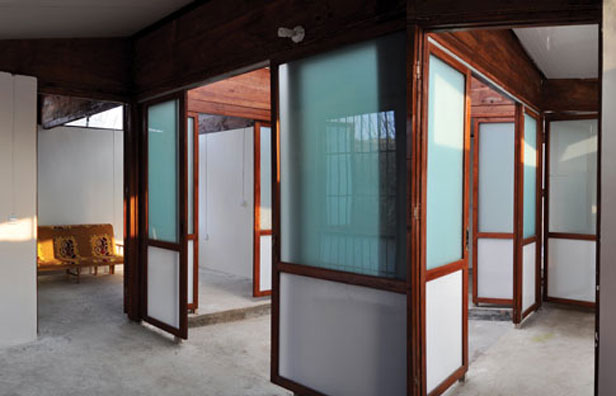
Home prices in many major cities can exceed $1,000 per square foot. But that dollar figure is the target price for a whole house in the Institute’s 1K House Project, an effort to build homes for the poor. A prototype called Pinwheel House, designed by Ying chee Chui, MA ‘11, has been built in Sichuan Province, China.
“It’s part of the responsibility of an architect, to create these spaces for people to live,” Chui says. “It’s from the heart.”
Chui drew up the plans as an architecture grad student during a 2009 design studio that launched the project, which focuses on areas hit by natural disasters such as the 2008 earthquake in Sichuan. This prototype ultimately cost more than the target but is still relatively inexpensive at $5,925.
The plan to build $1,000 homes was conceived by Tony Ciochetti, chair of MIT’s Center for Real Estate, and inspired by One Laptop per Child, the foundation headed by MIT’s Nicholas Negroponte that brings low-cost computers to children.
“There is a huge proportion of the world’s population that has pressing housing needs,” says Ciochetti, who got the idea after seeing a family of four emerge from a tiny mud hut in rural India.
Chui’s house, one of 13 plans resulting from the first 1K House studio, features wooden window frames and hollow brick walls with steel bars for reinforcement. It is intended to withstand a magnitude 8.0 earthquake. The prototype is larger than her original design—about 800 square feet, rather than 500—and the smaller version could be built for about $4,000, says Chui, now an architect in New York.
Pinwheel House has a modular layout, with identical rectangular rooms surrounding a central courtyard. “If you know how to build a single module, you can build the whole house,” she says.
The prototype “has good ventilation and good light,” says architecture professor Yung Ho Chang, who helped oversee the 2009 1K House design studio. “It’s not just about how cheap [a] house is, but if it’s decent,” he adds. Chang oversaw a related MIT design studio in the fall, with the aim of building $10,000 homes for Japan that could be constructed quickly following natural disasters.
Many hurdles remain before any home can be manufactured for $1,000. “If it were easy, somebody would have done it,” says Ciochetti. But Chang hopes that holding further design studios will help. “The inexpensive laptop got to be more than an idea; it became available for children,” he says. “I hope one day we’ll be in the same position.”
Keep Reading
Most Popular
Large language models can do jaw-dropping things. But nobody knows exactly why.
And that's a problem. Figuring it out is one of the biggest scientific puzzles of our time and a crucial step towards controlling more powerful future models.
How scientists traced a mysterious covid case back to six toilets
When wastewater surveillance turns into a hunt for a single infected individual, the ethics get tricky.
The problem with plug-in hybrids? Their drivers.
Plug-in hybrids are often sold as a transition to EVs, but new data from Europe shows we’re still underestimating the emissions they produce.
Stay connected
Get the latest updates from
MIT Technology Review
Discover special offers, top stories, upcoming events, and more.